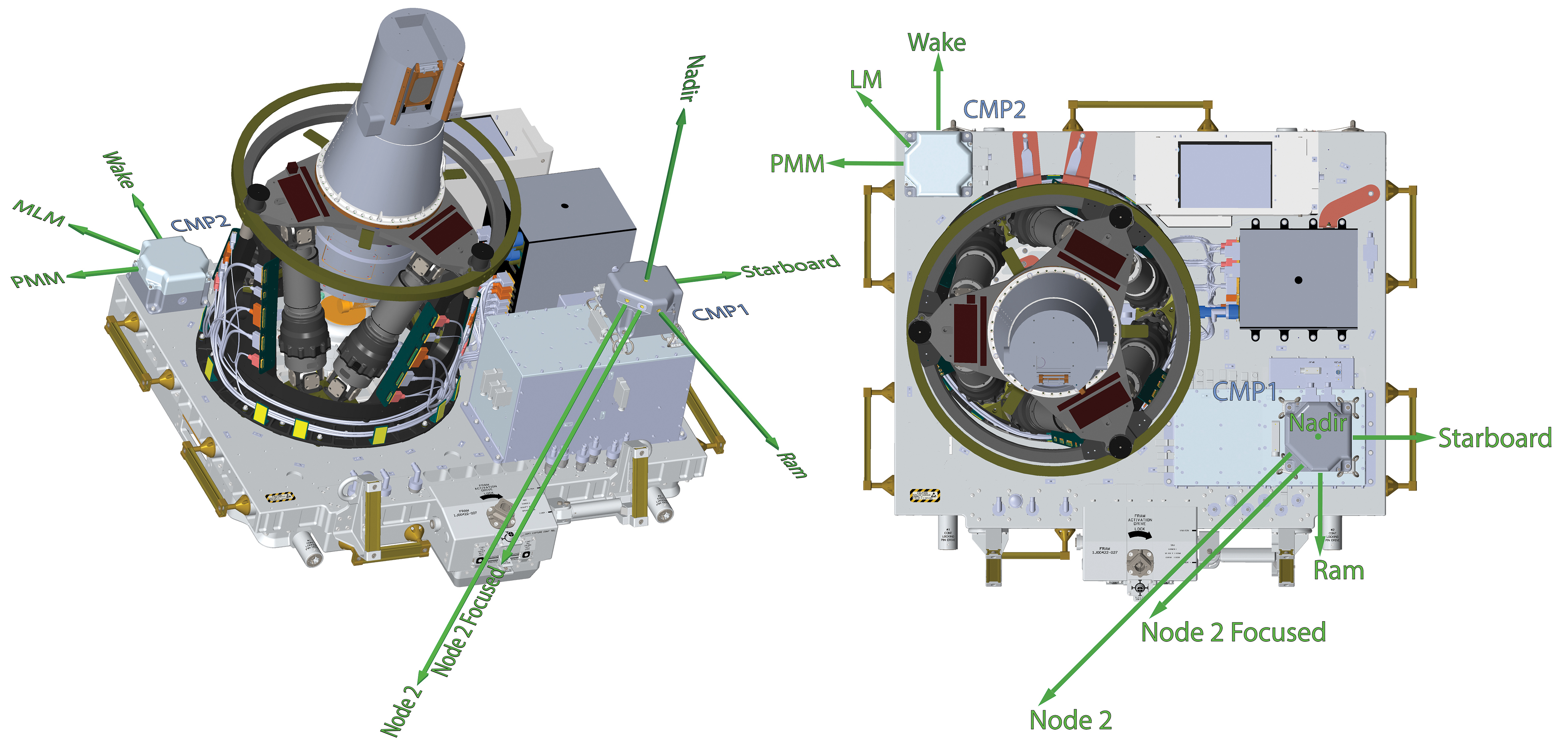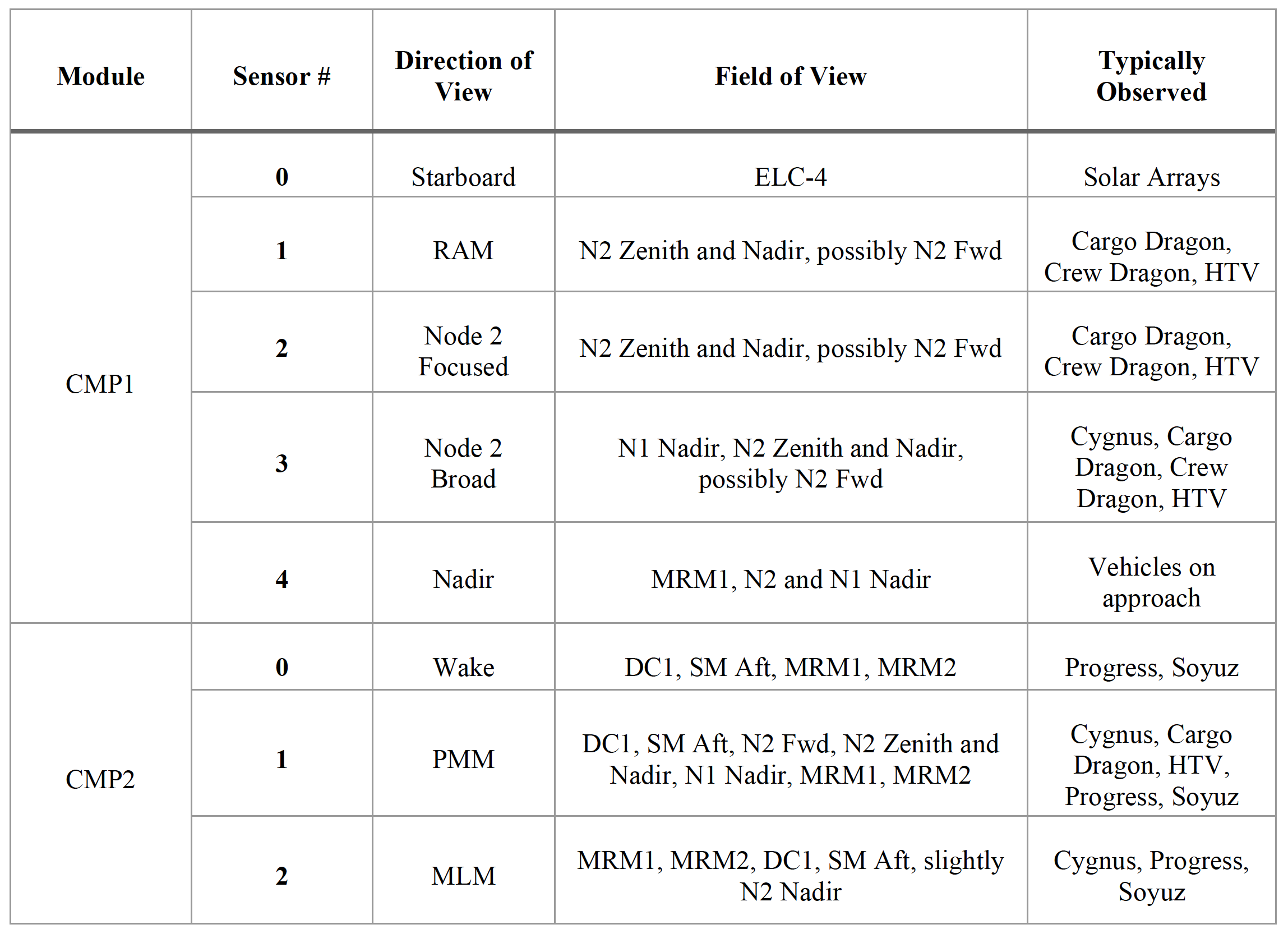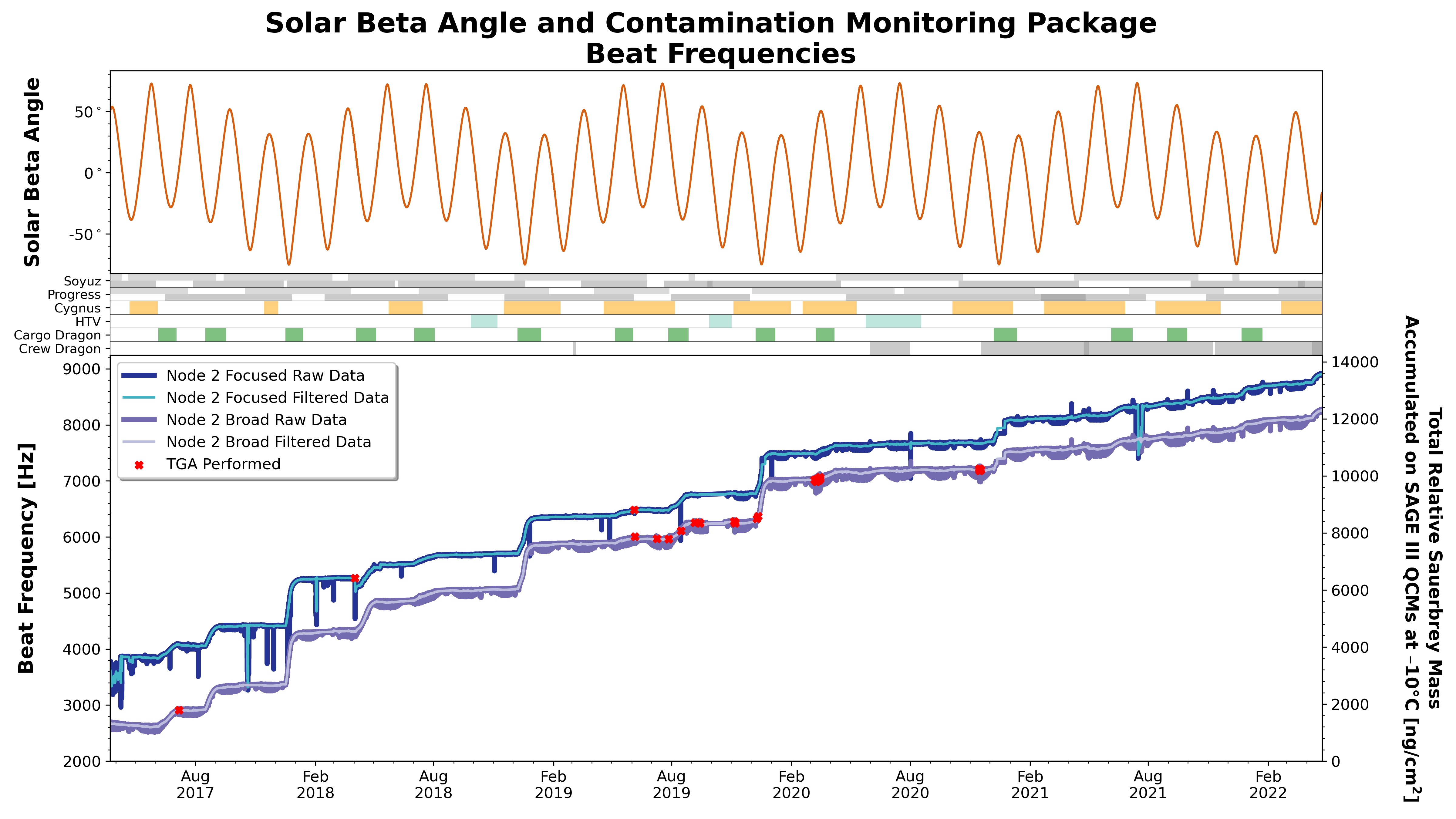Operating a science instrument aboard a crewed, frequently visited space station the size of a football field poses many challenges to data collection and quality. The Stratospheric Aerosol and Gas Experiment (SAGE) III instrument, currently on board the International Space Station (ISS), is equipped with the tools necessary to deal with these challenges.
Commanded from NASA’s Langley Research Center in Hampton, VA, SAGE III is a solar and lunar occultation instrument mounted externally on the ISS on ExPRESS Logistics Carrier-4 (ELC-4) measuring Earth’s stratospheric ozone, aerosols, water vapor, and other trace gases. Every time the sun, or moon, rises and sets, SAGE uses the light that passes through the atmosphere to measure gases and particles in that region of the atmosphere.
The ISS environment has proved to be an incredibly dynamic platform, with many factors affecting payload operations and Earth science data collection. Ideally, SAGE III would have a clean line of sight to make measurements with no mechanical disturbances or vehicles visiting the ISS. Because this is not always the case, the instrument payload was designed with several sensors that closely monitor local environmental conditions. SAGE III was the first on ISS to be built with two Contamination Monitoring Packages (CMPs) designated CMP1 and CMP2, to manage contamination events as they arise.
CMP1 and CMP2 each have multiple microbalance sensors containing quartz crystals that vibrate at frequencies dependent on how much molecular contamination is deposited onto the sensors. The image below illustrates where CMP1 and CMP2 are located on the SAGE III/ISS payload and the orientations of their respective contamination sensors. Each microbalance sensor can detect contaminant deposition to a precision of about 1.5 nanograms.
Two CMP modules are required for effective contamination monitoring because the layout of the SAGE III payload could obstruct the view of an individual CMP sensor at a single location. The image below illustrates the combined fields of view for both CMP modules’ sensors relative to the ISS. There is some overlap in the sensors’ visibility in case sensor failure occurs.
Data from the CMP modules have allowed the SAGE III mission operations team to develop flight rules for visiting vehicles and ISS attitude changes to proactively protect the payload and telescope optics from contamination by commanding the contamination door closed during these ISS activities. In addition to the commands sent before an event to protect the optics and payload, if real-time data from the CMP modules indicate an unacceptable accretion rate of contamination, the payload’s flight computer will automatically close the contamination door to protect the optics and allow quality science data collection to continue safely. The instrument scan head can then rotate and stow the telescope aperture in the cleanest available direction. Fortunately, unexpected contamination levels have never been high enough to cause the automatic closure of the contamination door.
Prior to the SAGE III launch, the contamination budget estimated that the ISS solar panel outgassing would be the largest source of contamination in the ELC-4 environment. After further studying the CMP data on-orbit, the SAGE III team has determined that the numerous visiting vehicles have actually been the largest measured source of contamination. The analyses and information below have been recently published as a paper in the Journal of IEST last December titled “Contamination Analyses of ISS Vehicle Visits.”
During SAGE III’s time in orbit, the following vehicles have visited the ISS: Russian Soyuz and Progress, SpaceX Cargo Dragon Commercial Resupply Services (CRS) and Crew Dragon, Japanese H-II Transfer Vehicle (HTV), and Northrup Grumman’s Cygnus capsule. Both CMPs have direct and partial views of many of the ISS docking ports as indicated in the table below.
When a visiting vehicle is docking, undocking, or outgassing contamination levels are high, the SAGE III mission operations team can perform a Thermogravimetric Analysis (TGA) characterization of the CMP sensors.
“TGAs are essentially science on the CMPs,” said SAGE III CMP Lead Tyler Dawson. “We want stuff to stick to the CMPs so we can monitor what’s on the overall payload itself. The CMPs getting dirty is kind of their point.”
During a TGA, the missions operations team slowly increases the temperature of the CMP crystals, typically kept at –10°C, to burn off contamination.
“If we find during a TGA that contamination burns off at a specific temperature, we can determine what type of contamination we are burning off by matching to something that is already ‘known’ to burn off at that particular temperature,” said Dawson.
After over four years of collecting and studying the CMPs’ data, the SAGE III team found that Cargo Dragon vehicles consistently had the highest rates of chemisorbed deposition on the CMP sensors. When contamination is chemisorbed onto the sensor, it cannot be burned off and removed. Without chemisorption, contaminants would spontaneously desorb from the sensors over time as is seen for most other sources of SAGE III contamination.
The figure below shows how the total amount of contamination on the CMP1 Node 2 sensors has slowly increased since the beginning of the SAGE III mission in 2017 and has not since returned to its original beat frequency levels. These results strongly suggest that contamination has continued to chemisorb onto the CMP sensors and has not burned off during TGAs.
The figure also illustrates the relationship between the ISS’s solar beta angle, vehicle visits, and contamination levels. (Intermittent noise on the Node 2 Focused sensor is a known problem but has low impact on data analyses.)
During a high negative solar beta angle, there is less shading on the areas of the space station near the SAGE III payload, and the heating can cause increased vehicle outgassing towards ELC-4.
“This is information we did not know going into the SAGE III/ISS mission,” said Dawson.
Throughout the mission, when Cargo Dragon vehicles have visited the space station during a high negative solar beta angle, the SAGE III CMP Node 2 beat frequency increased without returning to previous contamination levels.
The CMP2 PMM sensor also experienced similar results. Despite multiple TGAs performed, a new increased beat frequency baseline persisted correlating with Cargo Dragon visits.
“The CMP data really help characterize what is being brought to the ISS, which is typically a closed environment, except for what these vehicles are bringing from Earth,” said Dawson.
Without continuous contamination monitoring by the CMPs and exercising of the contamination door, it is likely the SAGE III atmospheric science data products would have been degraded. Future external ISS payloads should consider the dynamic environment of the space station to be able to protect and monitor sensitive science instruments for potential contamination.
Not only do the CMPs protect the payload and improve the science data products, but the CMP data also validate what external partners expect to see as ISS contamination sources. The SAGE III team provides the ISS Program and other relevant parties with contamination data correlated with station events which aid in closing the knowledge gap of on-orbit sources of contamination.
For more information about the SAGE III/ISS Contamination Monitoring Package data and studies, the paper SAGE III/ISS Contamination Monitoring Package: Observations in Orbit can be accessed online on the NASA Technical Reports Server.





